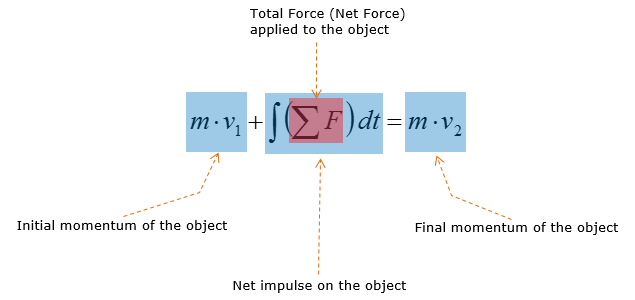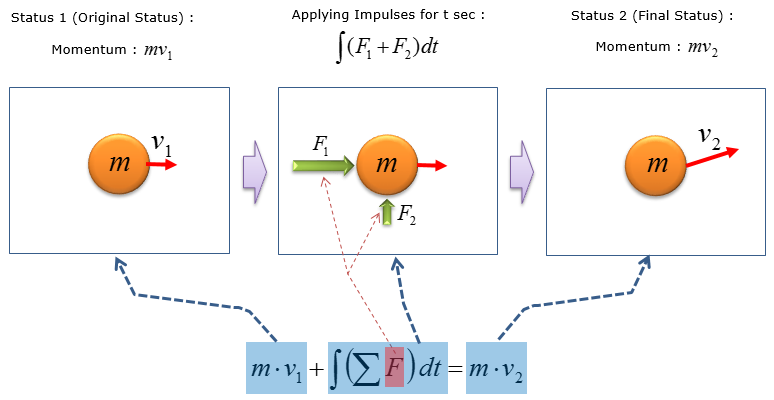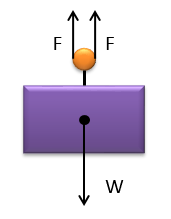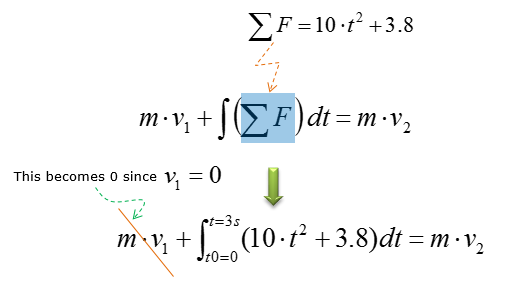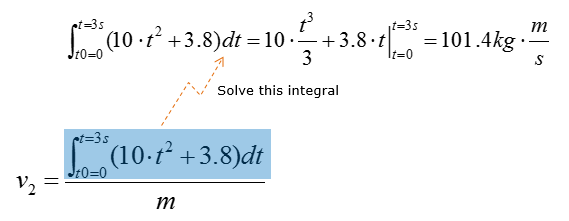|
Mechanical Engineering |
||
|
Impulse and Momentum
Principle of impulse and momentum is used to analyze the motion of an object in motion based on time-change due to applied force(s).
First let's think of what is Momentum and what is impulse. You may find various types of definitions from internet or textbooks. My definition would not be much different from what you would have seen in internet or in textbook. I would define these terms as follows.
Momentum : It is a physical quantity that indicates the status of an object in motion. It indicates how fast an object is moving at a certain time. Probably the mathematical definition would sound clearer because the equation is very simple as follows.
Impulse : It is a physical quantity that indicates how much forces are applied to an object for how long. Mathematically it is defined as follows.
Actually more important than understanding the definition of each terms is to understand how these two physical quantities are inter-related in real situation. These two quantigies are inter-related in the governing equation as shown below.
What does this mean ? Does it make sense to you ?
Let me explain this equation with an illustration as follows. I hope this would give you more intuitive understanding.
As you see in this equation, you don't need to know of the magnitude of acceleration to calculate the initial or final velocity of an object and this is why this form of equation is more widely used over other kinematic equations
What can we apply this for ? / Why we need to know about this ?
There are many fields you can apply this technique for, but followings are a couple of typical application of this technique.
Construction site:
Driving:
Example 1 >
The 20 kg crate is lifted by a force of F = (100 + 5 t^2) N, where t is in seconds. Determine the speed of the crate when t = 3s, starting from rest
Solution >
Since F is a function of time, principle of impulse and momentum is used as the governing equation for analyzing the final speed of the crate.
Step 1 : Compute the equation for the sum of the forces acting on the crate to calculate the speed of crate after 3 seconds.
Step 2 : Now let's plug this result into the governing equation that we described at the beginning of the page.
Step 3 : Now simplify a little bit and rearrange the equation with reference to v2 (because this is the one we need to figure out). Then we get the equation as follows.
Then, let's solve the integral part first to simplify the equation further
Plugging into all the values into the equation, we get the final result as follows
|
||


